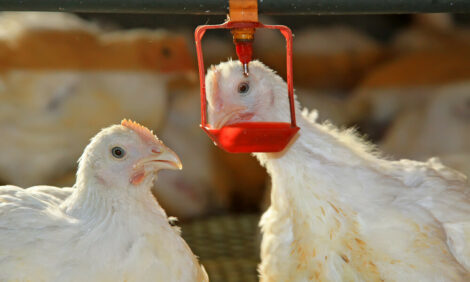



CME: Corn, Soybean Maintained Condition
US - Monday’s crop ratings from USDA indicated that both the corn and soybean crops maintained, on average, their condition in the past week. Corn rated as either good or excellent condition amounted to 63 per cent of total acres in this week’s Crop Progress report, write Steve Meyer and Len Steiner.That number is the same as last week and just over 3 per cent higher than the average of the past 10 years for this same week. It is also, of course, sharply higher than last year’s ratings in which only 24 per cent of the corn acres were rated good or excellent. Judged by the pattern of the 10-year average, the condition trend appears to be about normal for this time of year.
Soybean conditions fell slightly for the week with the percentage of the crop rated as good or excellent declining1 per cent to 63 per cent . That is just over 1 per cent higher than the 10-year average for this week and, like corn, sharply higher than last year’s 29 per cent good-excellent total.
The continuation of steady crop condition ratings pushed corn futures to life-of-contract lows yesterday and have pushed soybean meal futures down roughly $20/ton since their peaks in mid-June.
The reason we follow grain prices in The Daily Livestock Report, of course, is their importance in determining supplies in coming weeks, months and years. This year’s delayed plantings had left significant doubt as to whether the crop would be sufficient to reverse the extremely high prices of the past three years in general and 2012 in particular.
That doubt has not been completely erased
with last week’s Drought Monitor map showing “Abnormally Dry” conditions for about two-thirds of Iowa. Those ratings reflected conditions as of 7:00 a.m. on July 23 and rainfall in much of the Cornbelt has likely improved conditions since that time. This week’s Drought Monitor map reflecting conditions as of this morning will be released on Thursday.
Continued strong condition ratings have pushed forecasted costs of production sharply lower. An example is the hog cost model. Based on Iowa State University’s Estimated Costs and Returns series, the model, which predicts total costs per hundred pounds (cwt.) of carcass weight using corn and soybean meal futures, a time trend and a dummy variable to reflect the sharp shift in grain prices in 2007, now suggests average costs of $83.41/cwt. in 2014. That is $11/cwt. carcass weight or roughly $22 per head lower than this year — a change that will almost certainly fuel expansion of hog numbers in 2014 and beyond.
Similar costs reductions are being seen in the chicken and turkey sectors even though the declines are not as large due to soybean meal prices remaining relatively higher than corn prices. Those
species use much higher proportions of bean meal in their diets and there is still a significant weather premium in the soybean complex duet to the risk of an early frost. In recent travel in Iowa and Minnesota, we can verify that there are many acres of very small beans that will need a late frost to yield much of a crop.
The bottom line, though, is that costs will indeed be lower, fueling the expansion that has begun in earnest, we think, in the broiler sector. Egg sets have been 2.6 per cent to 4.2 per cent higher than one year ago in each of the past six weeks with 3.2 per cent being the average increase for the period.
While good crop conditions and potentially lower feed costs will help the beef sector by reducing feeding costs and enhancing feeder and calf values, the response will, of course, be much, much
slower. Part of that is simply due to the longer reproductive cycle of the bovine but the other factor is that grass conditions in much of the west remain very poor, limiting the ability of cow-calf operators to expand their cow herds. In spite of lower input costs, CattleFAX forecasts that beef cow herd to be down 300,000 head by January 1, 2014, putting it below 29 million head for the first time since 1962.












